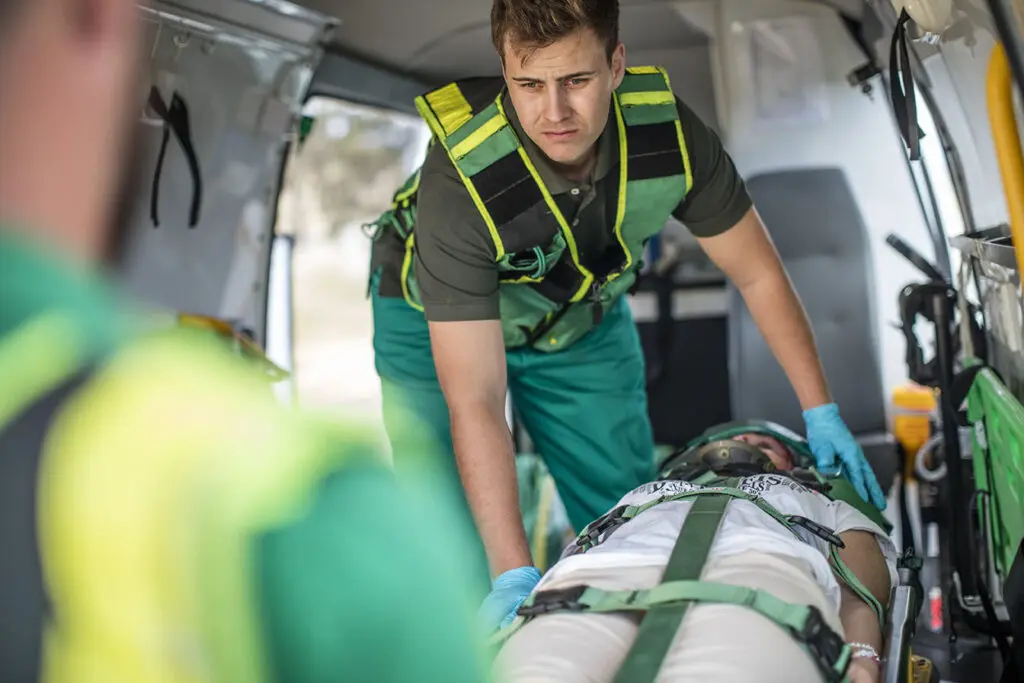Bad moments do not send a warning. A car slams into your bumper on Church Street. A fall on a wet floor at a grocery store leaves a broken wrist. A delivery van clips your bike near Wyoming Street. Pain sets in, bills add up, and questions pile on fast. A personal injury lawyer in Hazleton can step in early, protect options, and move your claim forward while you heal.
The first 72 hours matter more than most people think
Evidence fades. Skid marks wash away on North Church after a storm. Security footage at a West Hazleton store can be recorded over in days. Witnesses forget small details by the weekend. Early legal help preserves key proof and prevents mistakes with insurance forms that can limit recovery. Think of that first stretch as the window where small actions make a big difference.
So, when should someone in Hazleton pick up the phone and call a lawyer? Here are the moments that call for quick action.
Call right away if injuries are more than minor
If pain lasts beyond a day or two, if there is a hospital visit, or if imaging shows a fracture, concussion, or torn tissue, the case has real value and real risk. Soft tissue pain can hide bigger problems. A personal injury lawyer can connect medical records, set clear documentation, and track future care like physical therapy at facilities in and around Hazleton. This helps show the full picture, not just the first ER bill.

Call before giving a recorded statement to an insurer
Adjusters may sound friendly, but their job is to limit payouts. A quick recorded call can include questions that box a person in. Phrases like “I’m fine” or “I did not see the other car” can be taken out of context. And once recorded, it is tough to walk back. A lawyer can handle the communication, set ground rules, and submit a clear, fact-based account that safeguards the claim.
Call if fault is unclear or shared
Pennsylvania follows modified comparative negligence. In simple terms, if someone is more than 50 percent at fault, they cannot recover. If they are 50 percent or less at fault, their recovery can be reduced by their share of fault. That makes the story of what happened very important. At a tricky intersection like Broad and Laurel, one wrong assumption can shift fault. A local personal injury lawyer knows how to collect traffic cam clips, police crash reports from Hazleton City PD, and nearby business footage to correct bad assumptions.
Call if the crash involves a commercial vehicle or multiple parties
Truck crashes on Route 309, delivery vans on Alter Street, or contractor vehicles in Hazle Township raise extra layers. There can be company policies, driver logs, maintenance records, and different insurers. Deadlines to preserve truck data can be short. A lawyer can send preservation letters and keep that data from being wiped by routine practices.
Call if a property owner or business blames the victim
Slip and fall claims in Luzerne County often turn on notice. Did the store know, or should they have known, about the spill or loose mat? Businesses may argue open and obvious hazard or claim the person wore improper shoes. Early photos, incident reports, and witness names matter. A lawyer can move fast to secure video from the store, maintenance logs, and cleaning schedules, which can make or break the case.

Call if the injury happened at work but a third party may be involved
Workers’ compensation covers medical bills and part of lost wages, but it does not pay for pain and suffering. If a subcontractor, a delivery driver, or a defective tool played a role on a Hazleton job site, there may be a third-party claim. That can add real value. A personal injury lawyer can run both paths in parallel: workers’ comp and a claim against the at-fault party.
Call if the insurer pushes a quick, low settlement
Fast checks come with strings. Once someone signs a release, the case ends. No do-overs if pain worsens or surgery becomes necessary. A fair settlement accounts for medical care today and what doctors expect tomorrow. For example, a torn rotator cuff may need injections first, then surgery if pain continues. Settlement before a full treatment plan often leaves money on the table. A lawyer can time the claim so it reflects the real course of care.
Call if there is a serious injury or wrongful death
Life changes after spinal injuries, brain injuries, and severe fractures. Families in Hazleton carrying funeral costs or long rehab deserve space to focus on healing. A lawyer can handle the claim, coordinate with lien holders, manage Medicare or Medicaid issues, and pursue all available insurance, including underinsured motorist coverage.

What a personal injury lawyer actually does for Hazleton clients
- Investigates fast: collects crash reports, photos, camera footage, and witness statements from local scenes and businesses.
- Manages medical records: organizes bills and treatment summaries, tracks diagnoses, and obtains doctor opinions.
- Handles all insurer contact: stops pressure calls, submits statements in writing, and negotiates from a clear record.
- Calculates damages: adds medical costs, wage loss from employers in the Hazleton area, pain and suffering, and future care estimates.
- Files the lawsuit if needed: meets Pennsylvania deadlines and moves the case forward in Luzerne County courts.
Timing rules that matter in Pennsylvania
Pennsylvania’s general statute of limitations for personal injury is two years from the date of injury. That can shorten in claims involving public entities, where notice can be required much sooner. Evidence deadlines are more practical than legal, but just as real. Security footage may recycle in 7 to 30 days. Vehicle black-box data may be overwritten after a repair or sale. Calling a lawyer soon keeps options open.
Common Hazleton scenarios and how a lawyer helps
Street crashes on North Church Street or Route 93: A personal injury lawyer reviews the crash diagram, calls nearby shops for video, and checks for traffic camera angles. They also look for ride-share or delivery app data if those vehicles are involved.
Falls in businesses on Wyoming or Diamond Avenue: The lawyer requests incident reports, cleaning logs, and shift schedules. They compare timestamps to show how long a hazard sat on the floor.
Dog bites in neighborhood parks: Medical care and scarring assessments matter. A lawyer tracks rabies verification, homeowner’s insurance, and future scar revision consults if needed.
Injuries at rental properties: The focus is on code issues, prior complaints, and repair records. Photos of railings, steps, and lighting help show notice and breach of duty.
Medical care comes first, paperwork second
Good cases grow from good care. See a doctor in Hazleton or nearby as soon as symptoms start. Follow up. Keep discharge papers, prescriptions, and therapy plans. Do not skip appointments because the pain eased for a day. Insurers point to gaps in care to argue the injury was minor or unrelated. A lawyer can coordinate with providers and help reduce bills through negotiations after settlement, which increases the net recovery.
What a fair settlement looks like
A fair result reflects three buckets: medical costs, wage loss, and human loss. Medical costs include ER visits at local hospitals, imaging, surgery, physical therapy, chiropractic care, and prescriptions. Wage loss covers missed shifts, reduced hours, and even missed overtime when supported by employer records. Human loss addresses pain, the disruption of daily routines, loss of hobbies like hiking at Hickory Run, and strain on family life. A personal injury lawyer presents these details in a clear, local, and credible way.
Signs a case may need a lawsuit in Luzerne County
- Liability disputes do not resolve after sharing evidence.
- The insurer denies injuries despite consistent medical records.
- The offer ignores future care or wage loss.
- The at-fault driver carries low limits and underinsured coverage must apply.
Filing suit does not mean a trial will happen. Many cases settle after depositions and expert reports give the insurer a full picture. But having a lawyer ready to file keeps pressure on and protects deadlines.
How to choose a personal injury lawyer in Hazleton
Look for someone who handles injury claims day in and day out, communicates clearly, and knows the local roads, doctors, and insurers. Ask about prior cases similar to yours and how they were resolved. Confirm fees are contingency based, meaning the lawyer gets paid from the settlement or verdict, not up front. Ask who will handle calls and how often you will get updates. Fit matters. The right lawyer should explain things in plain language and respond within a reasonable time.
Ready to talk about your case?
A short call can clarify your options. Bring the crash report number, photos, medical bills, and any letters from insurers. A personal injury lawyer can review everything and explain the next steps in clear terms. And if the case is not a fit for legal action, a straight answer now can save time and stress.
Residents of Hazleton, West Hazleton, Hazle Township, and nearby communities can reach out for a free case review. Early advice protects your rights, helps collect key evidence, and sets a path to a fair outcome.
This article provides general information and is not a substitute for legal advice; consult with experienced lawyers for personalized guidance Attorney Advertising: The information contained on this page does not create an attorney-client relationship nor should any information be considered legal advice as it is intended to provide general information only. Prior case results do not guarantee a similar outcome.
